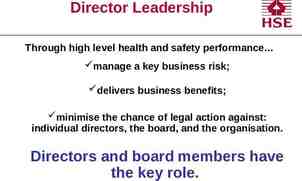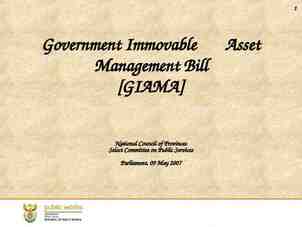Femise Annual Conference Athens 13-14 February 2016 Winners and
25 Slides9.13 MB

Femise Annual Conference Athens 13-14 February 2016 Winners and losers in the Tourism Industry along the transition process: Evidence from South and North MED countries Research Project FEM 41-04

Dr. Dooa Salman (team leader) October University for Modern Sciences and Arts, Egypt Dr. Andrés Artal-Tur Technical University of Cartagena & Institute of International Economics (IEI-UV), Univ. of Valencia, Spain Dr. Yasser Tawfik October University for Modern Sciences and Arts, Egypt Dr. Mohamed El Deeb October University for Modern Sciences and Arts, Egypt Doaa Ayman October University for Modern Sciences and Arts, Egypt

Introduction Tourism and hospitality industry is one of the most fast growing and global activity at the world level. Political and security matters have become an issue for the tourism industry along the Mediterranean (MED) and Middle East region. Transition processes in the region have brought relocation of tourists from south to north destinations. This change whether on the social or the political arena have negative a consequences on the South MED-MENA region, but positive on the North MED-EU shore. The downturn in tourism sector threatens hotels business performance in the South. In the North, increasing arrivals of more than one digit start to change the profile of tourists, affecting competitiveness and sustainability of destinations. 3

Outline of the Research Project FEM 41-04 We assess the impact of the Arab Spring and the instability in Middle East on the tourism sector for the whole MED region. Building on two salient case studies: Egypt and Spain. We analyze how the regional state of affairs has been affecting the tourism sector at the level of the hotel industry (Egypt) and demand/supply side (Spain). 4

Outline of the Research Project FEM 41-04 Section One: - A: overviews the tourism sector in the MED region. - B : analyzes the impact of the Arab spring in the MED region. Section Two: discusses the challenges in the Egyptian tourism sector. (Marketing mix in the hospitality and tourism industry, labor and the impact on the industry, Empirical research an integrated marketing mix model, and Key success factors) Section Three: analyzes how relocation is changing the profile of tourists arriving to Spanish destinations, and how it affects destination competitiveness and sustainability. Final: includes conclusions and policy recommendations. 5

International tourism, expenditures (current US ) 6

The tourism sector in the MED region: Overview (section 1-a finished) The Mediterranean (MED) region is the most visited tourism destination in the world: Reaching 215 M international arrivals (19% of world share) and 150,000 M euros (16%) in 2014 (UNWTO, Tourism Highlights 2015). Middle East countries received 51 M visits and North of Africa did it for 20 M in 2014. Over the years 1995-2010, international tourism revenues has shown rapid and sustained growth In the region, in both the number of tourists and revenues. NA countries grew 6.5% per year, ME 10.5%, while MED-EU countries did it for 3.7% along this period. UNWTO forecasts for 2010-2030 account for average annual growth rates of 4.6% for MENA countries and 2.3% for MED-EU countries. It means more than double arrivals in NA (46 M), tripled in ME (150 M), and new 50 M visitors in MED-EU region, including Turkey, that would reach 264 M of international tourists in 2030. 7

The tourism sector in the MED region: The Impact of Arab Spring and regional instability (section 1-b- finished) The Arab Spring, Lybian and Syrian conflicts and war, had a significant impact on the tourism industry. North African countries have lost 12% of international arrivals since 2010, while Middle East visitors decreased in 7 million since 2010, despite recent recoveries (UNWTO, 2016). Egypt showed -18% in arrivals in 2013, as well as Jordan -5% and Saudi Arabia 18%. Lebanon lost -17% in 2012, and Tunisia -3% in 2014. In Egypt, international tourism decreased from 14 million in 2010 to 9.6 in 2014. North MED-EU region has grown 30% in years 2010-2015, due among other things to the effect of relocations of arrivals. Spain has grown from 52 to 70 million between years 2010-2015. 8

Section 2: Hotel performance and Channels for Competitiveness: Understanding and monitoring the Egyptian case (in progress ) Objective: Modeling the Marketing Mix to Reestablish competitiveness and sustainability of the Hotel Industry the Egypt’s Hotel industry offers one of the most diverse and rich supplies in the world, including niche segments as residential tourism, city and culture experiences, health, medical and therapeutic tours, nature and desert safaris, eco-tourism or heritage and adventure travels. 9

Section 2: Hotel performance and Channels for Competitiveness: Understanding and monitoring the Egyptian case Cont’d Core Areas for Investment: Hotels, residential tourism, therapeutic tours, nature/desert safari, eco-tourism adventures, medical/health tourism. History, Culture and Religion: Egypt is home to countless well-preserved historical, cultural and religious sites. These sites span all corners of the country. Popular stops include sites along the path that was followed by the Holy Family, as well as ancient Pharaonic, Roman, Greek, Coptic and Muslim monuments. 10

Section 2: Hotel performance and Channels for Competitiveness: Understanding and monitoring the Egyptian case Cont’d Natural Variety and Climate: The diverse nature of Egypt’s terrain: beaches, oases, world-famous deserts, mountains, both the Mediterranean and Red seas (with a coastline that resembles that of Southern Italy and Spain) and the Nile River Valley, creates a significant draw. The country’s mild climate allows for tourism 12 months out of the year It makes it a particularly popular winter destination for tourists from cold-weather locales including Russia and Northern Europe. 11

Section 3: Hotel performance and Channels for Competitiveness: Understanding and monitoring the Egyptian case Cont’d Infrastructure: The country’s well-developed physical infrastructure includes major roadways, railways, river navigation, and ports, A network of world-class airports in all major urban centers. The airport network provides ease of travel within country, and ready access to major European cities Labor Force: Egypt has a large and educated labor force. Annually, more than 22,000 students graduate from Egyptian universities with European language skills, including English, French, German, Italian and Spanish. Many of these students have studied their second language since primary school. the Egyptian accent is neutral and easy to understand 12

The Egyptian Hotel performance and Channels of Competitiveness Figure 1: Existing Hotel Capacity in thousand during 2002 – 2014. Figure 1: Existing Hotel Capacity in thousand during 2002 – 2014. Source : Hotels Supervision Sector, MOT ( Ministry of Tourism ) - 2015 13

Most of the hotels are based in Red Sea with 39.6% of the total capacity, followed by 34.1% in South Sinai and 14.5% in Greater Cairo. Figure 2: Breakdown of Hotels & Tourist Villages Capacity by Main Governorates / Areas 2014 Source: Hotels Supervision Sector, MOT (Ministry of Tourism) 14

Research Objectives in Section 2: 1. To assess the impacts of feeble management performance on labor layoffs along the Egyptian transition process in hospitality industry. 2. To pinpoint the alternative options of labors layoffs during transition process in the Egyptian hospitality industry. 3. To determine the internal successful adjustment processes that have great impact on hotels occupancy rate during transition process. 4. To measure the effectiveness of a collaborative work in designing a proposed marketing mix model suited Egyptian hospitality industry during economic stagnation. 5. To measure the effectiveness of a proposed marketing mix model in the Egyptian hospitality industry during economic stagnation. 6. To assess the impact of the flexible rightsizing approach as a cost optimization tool against the layoffs Strategy. 15

METHODOLOGY Secondary data were collected from relevant textbooks, journals, and online databases. Primary data will be collected using a questionnaire as a data collection instruments. The instrument will be applied in 5 and 4 star hotels located in Great Cairo (4 hotels 4*, and 13 hotels 5*), Alexandria (1 hotel 4*, and 4 hotels 5*), Sharm Elshaikh (2 hotels 4*, and 8 hotels 5*), Hurghada (2 hotels 4*, and 8 hotels 5*), and Aswan (1 hotel 4*, and 2 hotels 5*) Egypt. Picking up information on the effect of the proposed model on managerial decisions of hotel managers and to what extent the application of the proposed model be verified in the Egyptian five and four star hotels in hospitality industry. 16

METHODOLOGY Cont’d Judgmental sample included 10 hotels covering luxurious four-star hotels, and 35 hotels covering luxurious five-star hotels, expected to distribute 20 questionnaires in each hotel for top, middle, first line managers and employees with expected 600 samples. Table 1: Breakdown of Hotels & Tourist Villages Capacity by Category and Main Governorates Category Governorate Greater Cairo Alexandria Aswan Red Sea South Sinai Total Units Rooms Beds 124 37 14 236 241 652 26038 3897 1994 60157 61222 153308 52076 7794 3988 120314 122444 306616 17

Proposed Model The researchers divided the model to internal environment, and external environment. The internal constructs consist of (Programming, Physical evidence, Policy, Process, People, Promotion, Place, Price, and Product), The external constructs consist of (Purse string, Partnership, Policy, People, Perception, and Promotion), Our aim is to provide managers with new analytic tools helping them to overcome the current challenges by using the proposed marketing mix model. 18

The Model Figure 3: The Proposed Marketing Mix Model 19

Marketing and branding tourism during crisis The high level of interaction between the process of hospitality and the nature of the services has affected the traditional concept of marketing mix to expand the service area by adding new elements: 1. Policy (rules and regulations) 2. People (all personnel involved in service processes, namely employees, service consumers as co-producers, and other consumers, who can influence the overall perception). 3. Processes (procedures, mechanisms and flow of activities by which services are delivered to customers) 4. Physical evidence (of an environment that facilitates service transactions or affects the perceptions: ambient conditions, spatial layout, signs and symbols, etc.) 5. Partnership (who can help us?) 6. Purse strings (funding sources) 7. Perceptions (cognitive processes, costumers, managers) 8. Programming (interpretations of the situation) 20

Section 3: The changing profiles of tourists in Spain and the effects on destination competitiveness and sustainability Spain is taken as a case study for winner countries in the relocation of tourism along the MED region. The growing number of arrivals is concentrated in a few destinations along the country. Such destinations (Canary Islands, MED Spanish area) have increased considerably the number of arrivals since 2010. We take advantage of a survey database from IET (Spanish Institute of TourismMinistry of Tourism) comprising more than 200,000 questionnaires to compare changing tourist profiles before and after Arab Spring (2009-2014) at these particular destinations. Information on individual profiles (age, sex, origin, income, studies), trip characteristics (stay length, accommodation, company, loyalty to destination, activities), and expenditure patterns is provided in the dataset. 21

Section 3: Effects on destination competitiveness and sustainability 1) We investigate how the changing profile of tourists (demand side) could be influencing tourism business at destinations, in terms of: - Average expenditure and stay duration - Frequency of visits, level of income, company (family, couple) - Geographical origin of visitors (EU, North of Africa, Overseas) - Type of accommodation (hotel, rent apartment, second-home) - Environmental impact (growth, seasonality, concentration) - Type of activities developed: traditional (sun-and-sand) versus more value-added activities (cultural, gastronomy, health treatments) - Level of satisfaction of tourists, loyalty to particular destinations 22

Section 3: Effects on destination competitiveness and sustainability 2) We also investigate how the relocation of tourists, together with the adjustment to the economic crisis, has been affecting the tourism industry at destinations (supply side): INE and IET dataset for years 2009-2014. -The structure of expenditure (by origin, destination, stay duration, type of accommodation, sex and age of tourist) -Analysis of the hospitality industry at particular destinations: Growth in arrivals: evolution and distributional analysis Industry-level indicators: evolution of prices, profits (Rev PAR, ADR), number of establishments, (un) employment level, labour force, sectoral activity, 23

Winners and loser in the MED region for the tourism industry Policy recommendations: Tourism and development policies South MED region (Egypt): On the Arab Spring impact on tourism industry at the macro level. On the micro impact on Hospitality management: guidance on improving efficiency, profits, keeping employment levels, new adjustment policies. Defining and testing a more inclusive marketing mix model. North MED region (Spain): Impact of relocation processes at the level of destinations. Demand and supply impacts, emerging policy issues for the sustainability and competitiveness of destinations in a data-driven analysis. 24

Winners and losers in the Tourism Industry along the transition process: Evidence from South and North MED countries FEM 41-04






